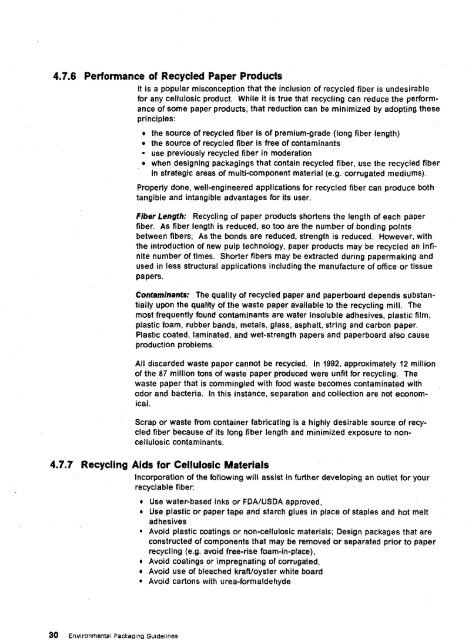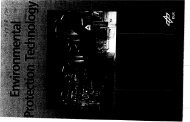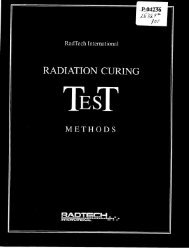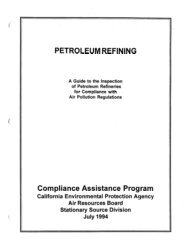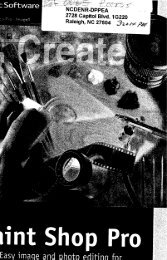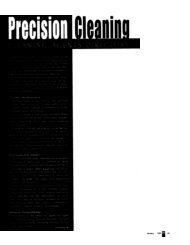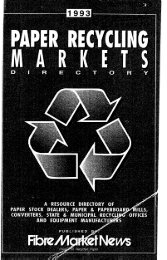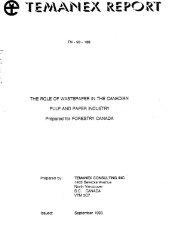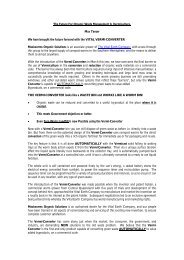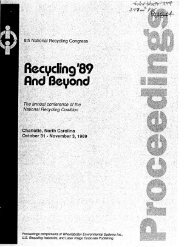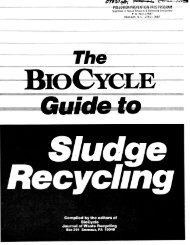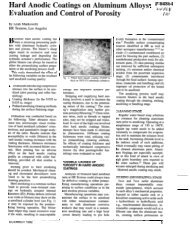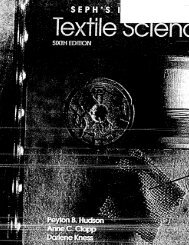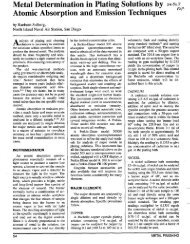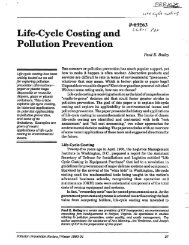Electronic Parts/Guidelines - infoHouse
Electronic Parts/Guidelines - infoHouse
Electronic Parts/Guidelines - infoHouse
Create successful ePaper yourself
Turn your PDF publications into a flip-book with our unique Google optimized e-Paper software.
4.7.6 Performance of Recycled Paper Products<br />
It is a popular misconception that the inclusion of recycled fiber is undesirable<br />
for any cellulosic product. While it is true that recycling can reduce the perform-<br />
ance of some paper products, that reduction can be minimized by adopting these<br />
principles:<br />
- use previously recycled fiber in moderation<br />
the source of recycled fiber is of premium-grade (long fiber length)<br />
the source of recycled fiber is free of contaminants<br />
when designing paCkagingS that contain recycled fiber, use the recycled fiber<br />
In strategic areas of multi-component material (e.g. corrugated mediums).<br />
Properly done, well-engineered applications for recycled fiber can produce both<br />
tangible and intangible advantages for its user.<br />
Fiber Length: Recycling of paper products shortens the length of each paper<br />
fiber. As fiber length is reduced, so too are the number of bonding points<br />
between fibers; As the bonds are reduced, strength is reduced. However. with<br />
the introduction of new pulp technology, paper products may be recycled an infi-<br />
nite number of times. Shorter fibers may be extracted during papermaking and<br />
used in less structural applications including the manufacture of office or tissue<br />
papers.<br />
Contaminants: The quality of recycled paper and paperboard depends substan-<br />
tially upon the quality of the waste paper available to the recycling mill. The<br />
most frequently found contaminants are water insoluble adhesives, plastic film,<br />
plastic foam, rubber bands, metals, glass, asphalt, string and carbon paper.<br />
Plastic coated, laminated, and wet-strength papers and paperboard also cause<br />
production problems.<br />
All discarded waste paper cannot be recycled. in 1092, approximately 12 million<br />
of the 87 million tons of waste paper produced were unfit for recycling. The<br />
waste paper that is commingled with food waste becomes contaminated with<br />
odor and bacteria. In this instance, separation and collection are not econom-<br />
ical.<br />
Scrap or waste from container fabricating is a highly desirable source of recy-<br />
cled fiber because of its long fiber length and minimized exposure to non-<br />
cellulosic contaminants.<br />
4.7.7 Recycling Aids for Cellulosic Materials<br />
Incorporation of the following will assist in further developing an outlet for your<br />
recyclable fiber:<br />
30 Environmental Packaaina <strong>Guidelines</strong><br />
Use water-based inks or FDNUSDA approved,<br />
Use plastic or paper tape and starch glues in place of staples and hot melt<br />
adhesives<br />
* Avoid plastic coatings or non-cellulosic materials; Design packages that are<br />
constructed of components that may be removed or separated prior to paper<br />
recycling (e.g. avoid free-rise foam-in-place),<br />
Avoid coatings or impregnating of corrugated,<br />
Avoid use of bleached kraWoyster white board<br />
Avoid cartons with urea-formaldehyde


